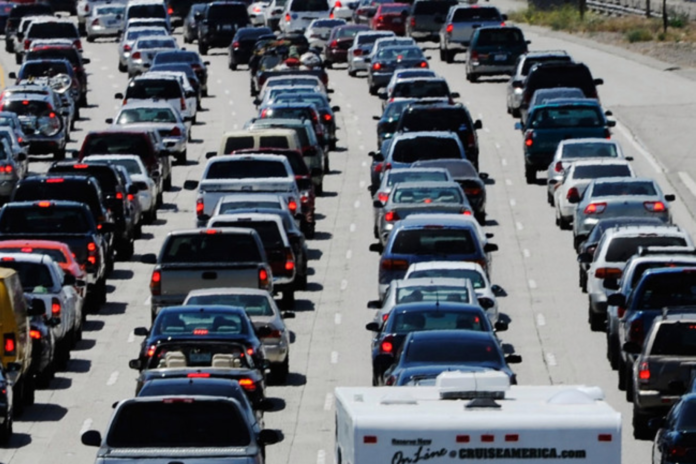According to the Texas A&M Transportation Institute, and the Urban Mobility Scorecard, the Twin Cities has worse congestion than ever before, measured by hours spent in “delay” per each auto commuter.
Minnesota Compass, put out by the Amherst Wilder Foundation, notes that this congestion “impacts the movement of goods and people throughout the state,” and “increases air pollution and costs—especially for businesses moving freight.”
And the congestion hasn’t always been rising. Specifically, congestion in the Twin Cities was flat between 2000 and 2010, at about 47 annual hours of traffic jams for auto commuters. Yet since 2010, the annual time commuters spend in traffic jams has shot higher to 56 hours.
Some of this is due to the overall economy. More people working means more drivers, which means more congestion. That isn’t a bad thing.
Congestion is higher, just as light rail expanded
But it’s interesting that congestion has moved higher, just when the state began spending more on non-auto transportation options, including light rail—which significantly expanded in 2014, with the introduction of the “green line.”
Conservative groups like Center of the American Experiment believe the congestion is a direct result of Minnesota policymakers, especially the Metropolitan Council, not investing in auto-focused infrastructure. The Center says this traffic delay costs $4 billion a year, and has launched a campaign calling for more roadway infrastructure.
The Center may have a point. Anecdotally, according to many Minnesota drivers, the congestion problem is exacerbated by several chokepoints surrounding the Minneapolis area. One of the worst of these chokepoints is the infamous 39-East to 94-East exit ramp, which can easily cause a mile-long line of cars during peak traffic hours.
The Twin Cities still a good commuting area, overall
But Minnesotans can still be thankful, for the most part. Despite the lack of spending on roadway infrastructure, Twin Cities commuters are still blessed with some of the lowest traffic-delay hours in the country. Minnesota’s current annual delay of 56 hours ranks behind St. Louis (46 hours), Tampa (50 hours), and San Antonio (51 hours). But it ranks well-ahead of annual traffic delays in Atlanta (77 hours), Seattle (78 hours), and San Francisco (103 hours).
The worst delay in the U.S. is unsurprisingly in Los Angeles, where commuters can expect to spend 119 hours per year stuck in traffic.











